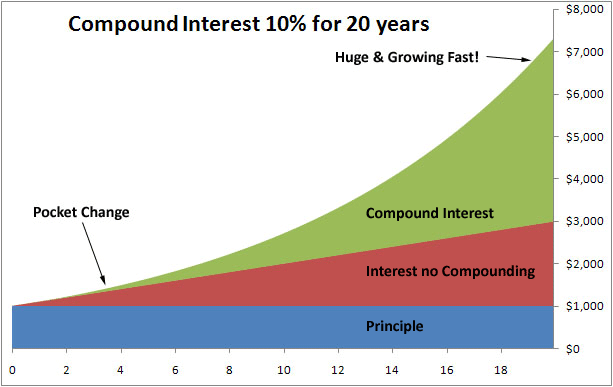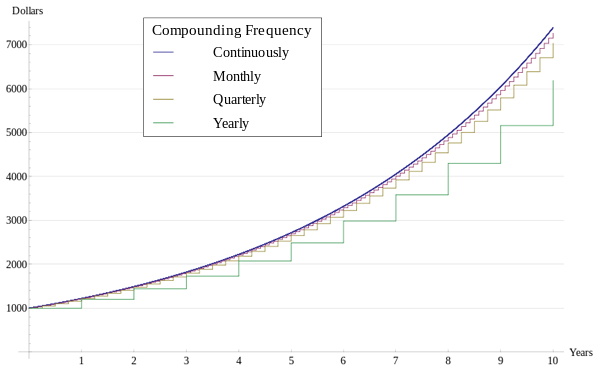All About Compound Interest: Is It Working for or Against You
Albert Einstein is attributed to saying, “Compound interest is the eighth wonder of the world. He who understands it, earns it ... he who doesn't ... pays it.”
Compound interest can be either your friend or your enemy. When you are investing it is your friend and can increase investment balances exponentially. When you are borrowing money it compounds under the same principle and results in high interest payments on the money you borrowed.
What Is Compound Interest
Compound interest is interest paid on the principle balance, combined with interest on the interest. When investing money, your interest or gains are added to the balance and then you earn money on the new higher balance as long as the gains are not withdrawn.
We see this displayed on paperwork for both loans and investments in terms of the rate and the yield. For example, a mortgage you may have a rate of 3.63 and a yield of 3.75. This means while the rate is 3.63, you will actually be paying 3.75 when considering the effect of compound interest.
On the flip side if a CD was paying 3.36, you would actually be paid 3.75 when compounding is accounted for. Here is a graph that shows the powerful effect of compound interest.

This chart shows a principle amount of $1,000 as the starting point, growing to over $7,000 in 20 years with the amount compounding. If it was an investment you would be gaining the increase, for debt you are paying that amount.
How Often Is Interest Compounded?
One major effect to the amount you earn or pay is dependent on how often the account is compounded. Accounts are generally compounded daily, monthly, quarterly or yearly. The more frequently the interest is compounded the more you earn or pay.
Credit cards typically compound interest daily which makes the compound interest you pay the highest possible. Combine this with a small percentage of the balance due each month and you could find yourself paying 3 or 4 times the amount of the original purchase due to compounding.
This graph shows the impact of more frequent interest compounding.

As you can see, an initial $1,000 balance can grow to over $7,000 in 10 years due to daily compounding. That’s almost $1,000 more than if the interest were compounded annually.
The Power of Time
When investing money, time is on your side with regard to compound interest. The longer the money is left to grow the more compounding has the opportunity to benefit you. The closer you are to retirement the more of your physical money you must invest to reach your goal. This is because you do not have the benefit of time to maximize compounding.
On the debt side, time is your enemy. The longer the debt is carried the larger the balance will be. Paying the debt off quickly will reduce the impact of compound interest and can save you thousands of dollars over the life of the debt.
When late payments are made, then penalty interest rates, late fees and other costs can grow debt into an insurmountable balance in a very short period of time, due to compound interest. Any additional late payments or fees are now being charged interest for every day they are outstanding.
Combining daily compounding with high interest rate credit card debt can be the recipe for financial disaster. Understanding interest and compounding can help motivate you to get debt paid off quickly and create an urgency to contribute to retirement and other long term financial goals.
